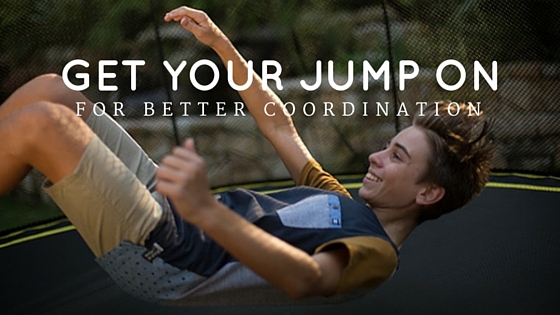SpringFree Trampoline—the maker of the World’s Safest Trampoline—says, “Get your Jump On!”
“My child doesn’t have great coordination,” is a common phrase heard among parents. Coordination, gross motor skills, rhythm and spatial awareness are all necessary developments of the human body as we grow up. This is why doing sports of varying design is an important part of development—from gymnastics to judo to soccer.
The ability of balance is one of the coordinative characteristics, like the reaction speed, and rhythm talent, and is an important attribute in learning sportive skills, and shows differences depending on the characteristics of sports branches. (Sirmen et al., 2008)
Playing sports regularly is mostly perceived as valuable to fitness and health, but the development of motor skills requires more discipline and so the technical moves associated with movements in gymnastics for example rapidly improve a person’s balance.
The learning rate and level of technical skills in sports are closely associated with motor skills development and balance.
It is important to keep the whole body in balance and to maintain this balance when learning the movements and changing positions rapidly. Performing complex motor skills, such as those performed by gymnasts or dancers, requires a great sense of balance (Vuillerme et al., 2001).
Trampolining For Better Motor Skills
So this is where trampolining, although heaps of fun, does in fact aid this technical development of balance and motor skills.
“Jumping on the trampoline is an enjoyable activity which develops motor coordination, aerobic fitness, strength, balance and a sense of rhythm and timing” (Heitkamp et al., 2001; Crowther et al., 2007).
Gymnastics, for example, offers a great range of locomotive, stability and body control movements which are highly important for the development of children.
Transition from dynamic to static elements and vice versa, and frequent changes of the body position in space, are all the types of technical movements which when repeated build up the brain’s awareness of space, timing and rhythm. (Paject et al., 2010).
For years people have perceived the trampoline as only a recreational backyard toy, but as gymnastics has proven, it serves a far greater tool for physical development.
The modern trampoline was patented by George Nissen in 1936 who championed its use for recreation and competition. After the war, it was used in schools and competitively.

The “Science of Gymnastics” journal published a research piece from Marmara University, School of Physical Education and Sport, Istambul, Turkey. The research explored the benefit of trampolining to the physical development balance and motor skills of nine-year-old boys.
It concluded that 12-week trampoline training increased bipedal static balance, dynamic balance and vertical jump values in boys who do not exercise regularly.
Trampoline training is an effective intervention to improve multi-functional motor features. Based on this evidence, we recommended the use of trampoline training for postural control and explosive power improvement in children to sports trainer and physical education

Learn more about this health study at the Springfree Trampoline blog.











